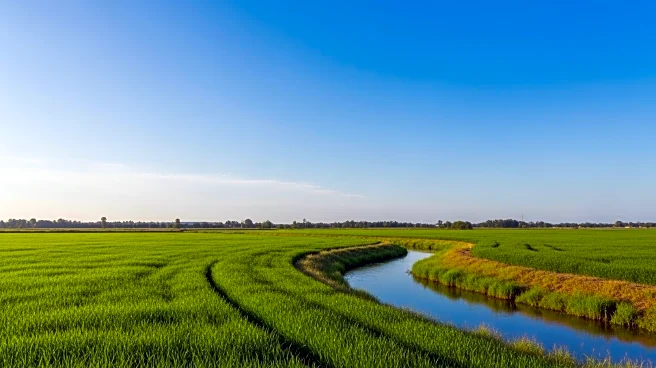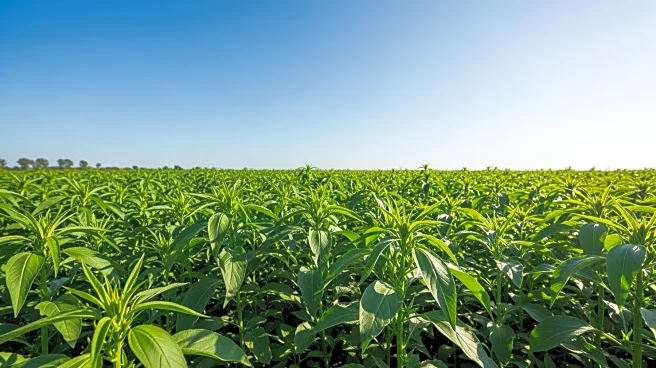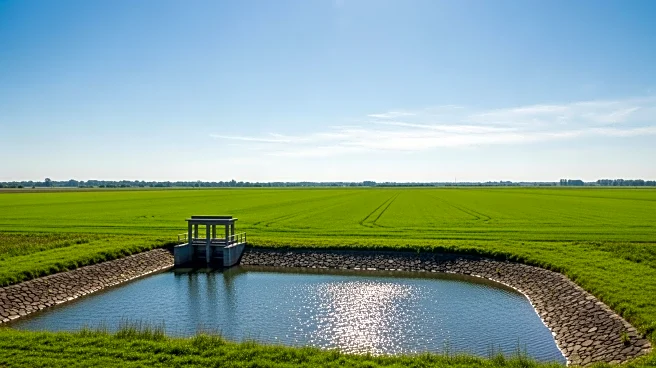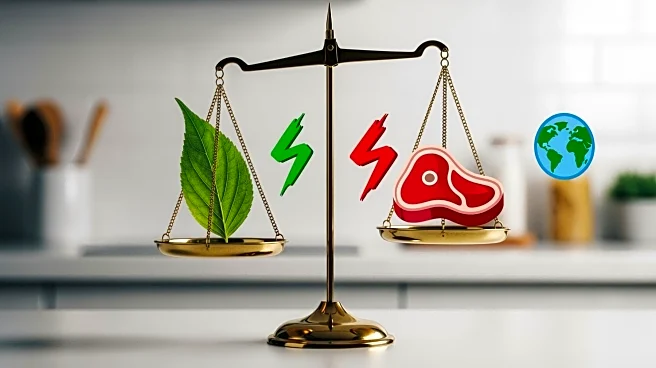What's Happening?
The Yatağan Girme Dam in Muğla has begun retaining water, marking a significant development for local agriculture. According to Minister of Agriculture and Forestry İbrahim Yumaklı, the dam will store water to irrigate 21,510 decares of agricultural land
in the Girme Plain using modern irrigation systems. This initiative is part of broader efforts to enhance agricultural productivity and ensure food supply security amid global climate change. The dam, constructed by the General Directorate of State Hydraulic Works, is designed as a rockfill dam with a concrete-faced facade, capable of storing 12,750,000 cubic meters of water. The project includes an extensive irrigation network, with 87,500 meters of pipeline and 558 engineering structures completed, alongside a drainage channel.
Why It's Important?
The Yatağan Girme Dam is crucial for Muğla's agricultural sector, providing a reliable water source to boost productivity and sustainability. This project aligns with Turkey's strategy to mitigate climate change impacts and secure food supply. By enhancing irrigation capabilities, the dam supports local farmers, potentially increasing crop yields and contributing 470 million lira annually to the national economy. The initiative reflects a commitment to modernizing agricultural practices, which is vital for maintaining competitiveness in the global market and ensuring long-term food security.
What's Next?
With the dam now operational, the focus will shift to monitoring its impact on agricultural productivity and local water management. The increased water availability is expected to improve crop yields, benefiting farmers and the regional economy. Continued investment in similar projects may be anticipated, as Turkey seeks to expand modern irrigation systems nationwide. Stakeholders, including government agencies and local farmers, will likely assess the dam's performance and explore further enhancements to maximize its benefits.
Beyond the Headlines
The Yatağan Girme Dam project highlights the intersection of environmental policy and agricultural development. It underscores the importance of infrastructure in adapting to climate change and securing food resources. The initiative may inspire similar projects in other regions, promoting sustainable agricultural practices and water management. Additionally, it raises questions about the balance between development and environmental conservation, as large-scale projects can have ecological impacts.














